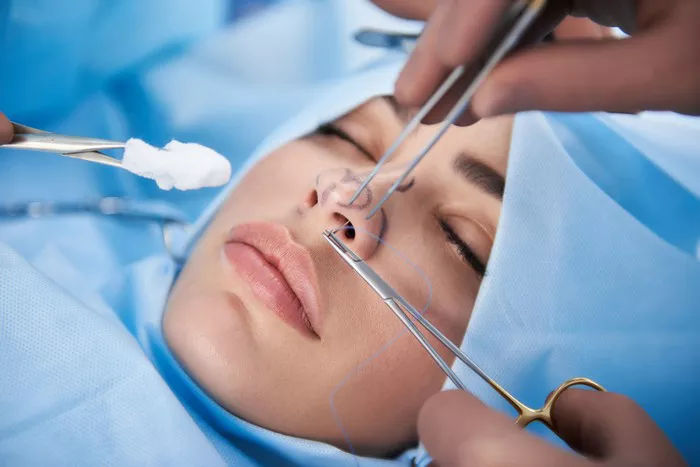Rhinoplasty, also known as a nose job, is a surgical procedure that involves reshaping the nose. This procedure can be performed for both cosmetic and medical reasons, and it is one of the most commonly performed plastic surgeries worldwide. After rhinoplasty, patients are required to wear a cast on their nose to protect it and support the healing process. In this article, we will discuss how long the cast stays on after rhinoplasty and what patients can expect during the recovery process.
The Purpose of the Cast After Rhinoplasty
After rhinoplasty, a cast is applied to the nose to protect it from accidental bumps or trauma. The cast also helps to keep the nasal bones and cartilage in place as they heal. The cast is typically made of plaster or fiberglass and is applied by the surgeon at the end of the rhinoplasty procedure. The cast will remain in place for a specific period, depending on the surgeon’s instructions.
The cast is an essential part of the healing process after rhinoplasty. It provides support to the nose as it heals, preventing any damage to the delicate tissues. The cast also helps to reduce swelling and bruising, which are common after rhinoplasty. Without the cast, the nose would be vulnerable to injury, and the healing process would be slower.
How Long Does the Cast Stay On After Rhinoplasty?
The length of time that the cast stays on after rhinoplasty varies depending on the individual patient and the extent of the surgery. In general, the cast is removed within 5 to 10 days after the rhinoplasty procedure. The surgeon will provide specific instructions on when the cast can be removed, and this will depend on how quickly the patient’s nose is healing.
During the first few days after the rhinoplasty procedure, the cast will provide support to the nose and help to reduce swelling. However, as the nose heals, the cast can become uncomfortable, and patients may experience itching or pressure. It is essential to follow the surgeon’s instructions carefully regarding when the cast can be removed to ensure the best possible outcome.
The surgeon may also recommend the use of nasal splints, which are small plastic or silicone tubes that are placed inside the nostrils to support the nasal passages. The nasal splints are usually removed at the same time as the cast.
What to Expect After the Cast is Removed
After the cast is removed, patients may experience some swelling and bruising around the nose and eyes. This is normal and should subside within a few days. Patients may also experience some discomfort, but this can be managed with over-the-counter pain medication.
It is important to avoid any activities that could cause trauma to the nose for several weeks after the cast is removed. This includes sports, exercise, and any activities that could cause the nose to be bumped or hit. Patients should also avoid blowing their nose for at least a week after the cast is removed to prevent any damage to the healing tissues.
Patients should also avoid wearing glasses or sunglasses that rest on the bridge of the nose for at least six weeks after the cast is removed. This can cause pressure on the healing tissues and delay the healing process. Instead, patients should use glasses that rest on the cheekbones or forehead.
Tips for a Smooth Recovery
To ensure a smooth recovery after rhinoplasty, it is essential to follow the surgeon’s instructions carefully. This includes taking any prescribed medication, avoiding any activities that could cause trauma to the nose, and attending any follow-up appointments.
Patients should also take care of their nose during the recovery process. This includes keeping the nasal area clean and avoiding any irritants or allergens that could cause inflammation. Patients should also avoid smoking, as this can delay the healing process and increase the risk of complications.
It is also important to get plenty of rest and avoid strenuous activities during the recovery period. This will allow the body to focus on healing and reduce the risk of complications. Patients should also eat a healthy, balanced diet to provide the body with the nutrients it needs to heal.
Conclusion
Rhinoplasty is a common surgical procedure that can improve the appearance and function of the nose. After rhinoplasty, a cast is applied to the nose to protect it and support the healing process. The length of time that the cast stays on after rhinoplasty varies depending on the individual patient and the extent of the surgery. Patients should follow the surgeon’s instructions carefully to ensure a smooth recovery and the best possible outcome. With proper care and attention, patients can expect to see the full results of their rhinoplasty within several months after the procedure.

